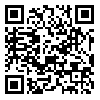Fri, Dec 12, 2025
Volume 15, Issue 1 (Winter 2025)
PTJ 2025, 15(1): 59-68 |
Back to browse issues page
Download citation:
BibTeX | RIS | EndNote | Medlars | ProCite | Reference Manager | RefWorks
Send citation to:



BibTeX | RIS | EndNote | Medlars | ProCite | Reference Manager | RefWorks
Send citation to:
Fassaii A, Mohamadi S, Hossein Zadeh S, Adibhesami M. Study Protocol for a Randomized Trial Comparing Tendon and Nerve Glide in Carpal Tunnel Syndrome Rehabilitation. PTJ 2025; 15 (1) :59-68
URL: http://ptj.uswr.ac.ir/article-1-642-en.html
URL: http://ptj.uswr.ac.ir/article-1-642-en.html
1- Department of Physiotherapy, School of Rehabilitation, University of Social Welfare and Rehabilitation Sciences, Tehran, Iran.
Abstract: (3591 Views)
Purpose: Carpal tunnel syndrome (CTS) is one of the most common neuropathies. Among the treatment modalities, exercise therapy, in addition to its therapeutic effects, does not require continuous clinic visits or a therapist’s constant presence, saving the patient time and money. Accordingly, this study compares two models of therapeutic exercises, including nerve glide and tendon glide.
Methods: The participants were divided into two random groups (n=25 in each group). The first group received ultrasound and nerve gliding exercises; the second group received ultrasound and tendon gliding exercises. The treatment lasted 8 weeks (2 times weekly) and the participants conducted the exercises at home under supervision. Before and after the intervention, a visual analog scale (VAS), Boston questionnaire, dynamometer measures, and electro-diagnostic tests were done in both groups.
Results: Regarding the effects of the neural and tendon gliding techniques, there are contradictory findings in the studies, often due to the lack of standardized study protocols and the absence of gold-standard outcome measures.
Conclusion: With the establishment of standardized protocols and the use of reliable and practical outcome measures in the current study, doing exercises at home and having a follow-up to assess the sustainability of treatment effects, neural gliding may be more effective in the treatment of CTS, considering the nature of the injury.
Methods: The participants were divided into two random groups (n=25 in each group). The first group received ultrasound and nerve gliding exercises; the second group received ultrasound and tendon gliding exercises. The treatment lasted 8 weeks (2 times weekly) and the participants conducted the exercises at home under supervision. Before and after the intervention, a visual analog scale (VAS), Boston questionnaire, dynamometer measures, and electro-diagnostic tests were done in both groups.
Results: Regarding the effects of the neural and tendon gliding techniques, there are contradictory findings in the studies, often due to the lack of standardized study protocols and the absence of gold-standard outcome measures.
Conclusion: With the establishment of standardized protocols and the use of reliable and practical outcome measures in the current study, doing exercises at home and having a follow-up to assess the sustainability of treatment effects, neural gliding may be more effective in the treatment of CTS, considering the nature of the injury.
Keywords: Carpal tunnel syndrome (CTS), Nerve glide, Tendon glide, Exercise, Rehabilitation, Electrodiagnosis
Type of Study: Research |
Subject:
Sport injury and corrective exercises
Received: 2024/05/13 | Accepted: 2024/08/17 | Published: 2024/01/13
Received: 2024/05/13 | Accepted: 2024/08/17 | Published: 2024/01/13
Send email to the article author
| Rights and permissions | |
 |
This work is licensed under a Creative Commons Attribution-NonCommercial 4.0 International License. |






